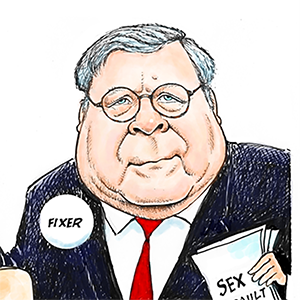Ranks of Hispanic officers reaching record levels at NYPD
Published in News & Features
For the first time since the NYPD was formed 179 years ago, there are more Hispanics in the rank of police officer — the initial rank when becoming a cop — than any other demographic group, according to a fraternal group and police sources.
The changing face of the nation’s biggest police force — which comes amid continued outreach efforts by the NYPD and shifts in the city’s demographics — comes 20 years after the city paid $91 million to settle a discrimination lawsuit by the Latino Officers Association.
Four years before that, the U.S Commission on Civil Rights said in a report that people of color “are still dramatically underrepresented in the force compared with the overall population of New York City.” “Moreover,” the report said, “the many flaws in the recruitment and training processes may contribute to race-related problems in the NYPD.”
According to the latest breakdown of the 33,475 cops on the force, there are still more whites, 39.7%, than Hispanics, 32.5%, Blacks, 16.5% and Asian, 11.3%. But those numbers are moving closer and closer to the overall breakdown of the city population of 8,335,897. Whites represent 31.2% of the population, Hispanics, 29%, Blacks 23.1% and Asians, 14.5%.
Among the rank of police officer, there are 7,542 Hispanic police officers, 35.9% of all officers. Whites are second, with 7.049, or 33.5%, followed by Black officers, with 3,741, or 17.8% and Asians, with 2,675, of 12.7%.
Det. Joseph Ayala, president of the NYPD Hispanic Society, a fraternal group, said the department has worked toward “creating a more representative force with qualified candidates that reflect the demographics of the communities they serve.”
That, he noted, includes Hispanics of various backgrounds.
“Their stories, their lives are all essentially billboards for the NYPD,” said Ayala, who is Puerto Rican. “Having a diverse police force leads to better understanding and improved relationships with the communities we serve.”
Another cop, a supervisor who is Cuban, said that when he joined the NYPD nearly 19 years ago it was at the urging of his father.
Today, he said, the department’s concerted recruitment efforts have paid dividends, with a force that looks more like the city it polices and is more responsive to the needs of various communities.
The NYPD has said its diversity efforts are improving relations with the community, but critics say there are still profound problems when it comes to how the police treat people on the street.
“Having the number of Latino officers in the NYPD more closely reflect our city’s demographics is notable but does not by itself guarantee that New Yorkers will get the dignity, respect, and justice they deserve from those who are supposed to protect and serve them,” said Lourdes Rosado, president of Latino Justice PRLDEF, for Puerto Rican Legal Defense and Education Fund, a civil rights organization.
“While we may hope that Latino officers will take the concerns of Latino New Yorkers seriously, as long as the department continues to evade its responsibility to discipline widespread officer misconduct, the race or identity of the officer in question will not heal public trust.”
But Alex Sanchez, a Bronx lawyer who is Puerto Rican and Italian, believes there is less police misconduct today than in the past — and that minorities are being treated better as a result.
He has seen his share of police misconduct, but less than in the past, he said, in part because police are more in step with the communities they serve and are treating people better.
“While you do come across cases where police do something wrong or don’t have a justification for stopping you I believe there is less of that — and when it does happen it’s not always simply because you’re black or Hispanic.” Sanchez said.”I don’t simply believe something that’s told to me. I want to know the facts.
“I’m not interested in suppositions or people deciding there must be racism going on.”
_____
©2024 New York Daily News. Visit nydailynews.com. Distributed by Tribune Content Agency, LLC.






Comments